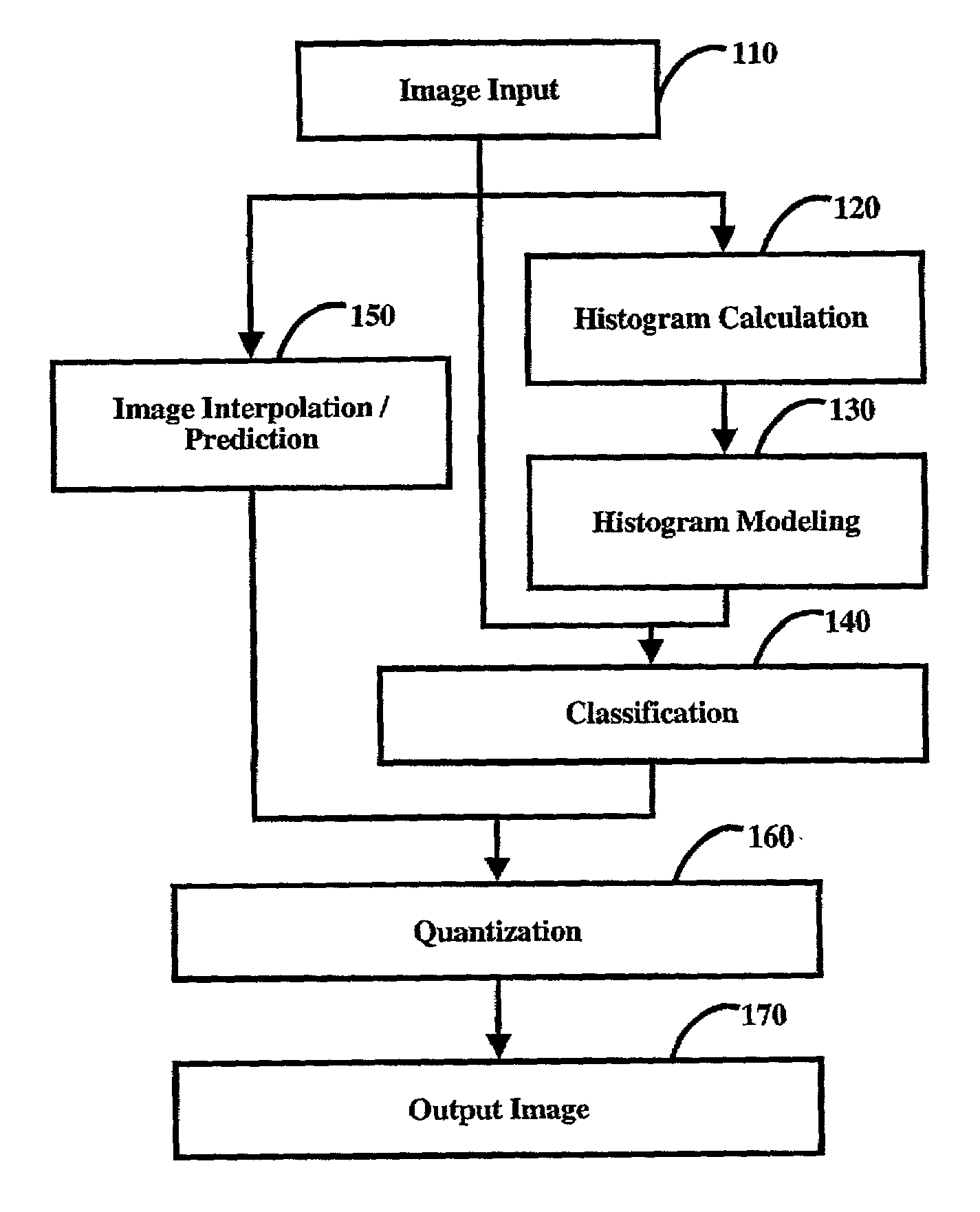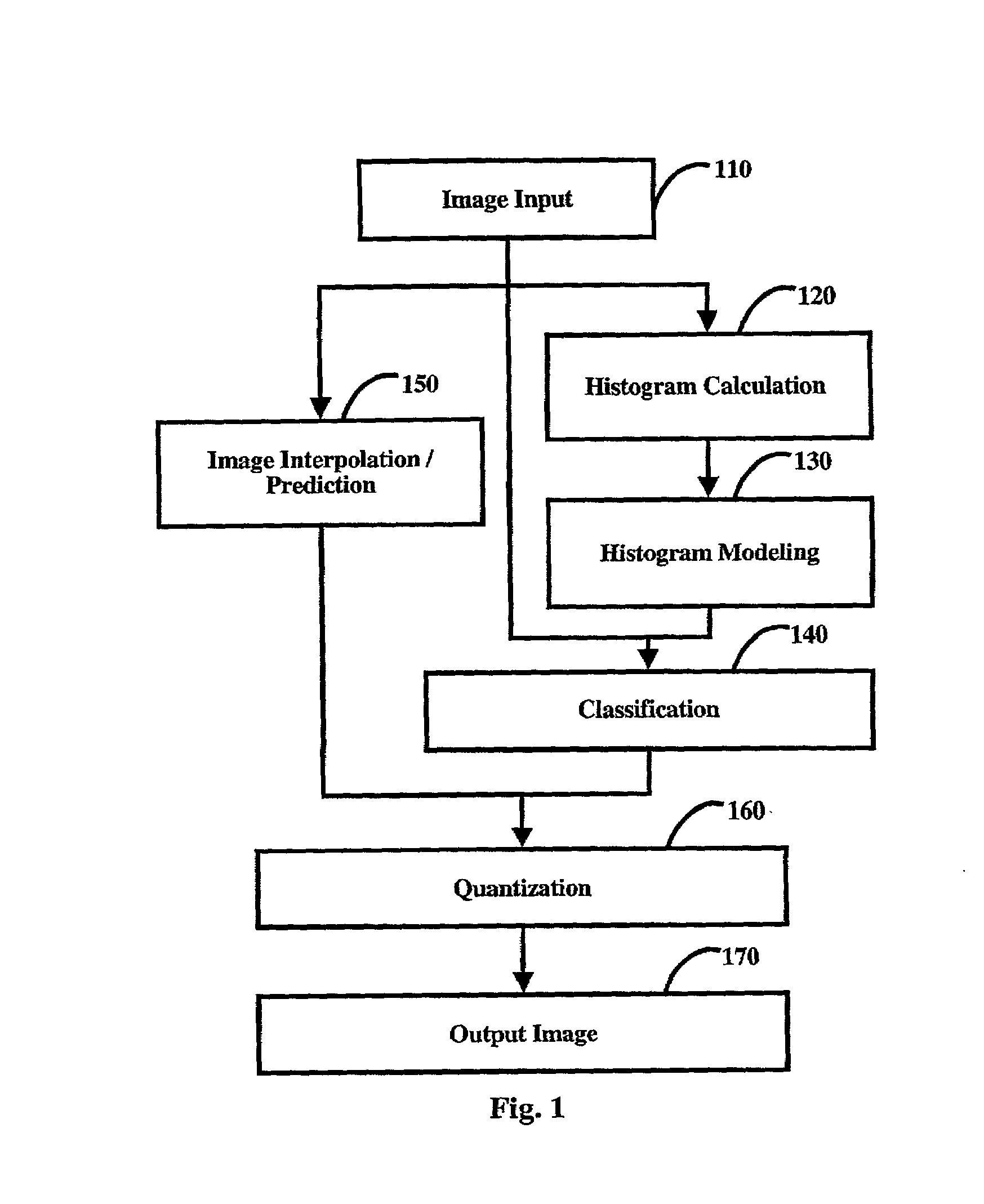Method of image binarization using histogram modeling
a binarization and histogram technology, applied in the field of image processing, can solve the problems of low contrast, inadequacies, and high intensity values of the same page, and achieve the effects of not being suitable for low resolution, noisy images, and low contras
- Summary
- Abstract
- Description
- Claims
- Application Information
AI Technical Summary
Benefits of technology
Problems solved by technology
Method used
Image
Examples
Embodiment Construction
[0040]As shown in FIG. 1, the first step, 110, of the present method of image binarization using histogram modeling is to obtain a gray scale digital image, either by scanning a document page or other means. This input gray scale image consists of a two-dimensional array of multiple-bit values for which each individual value represents the light intensity reflected from a corresponding spatial location of a scanned document. The scanned document is considered to contain both foreground and background luminance values, typically corresponding to the dark foreground regions and light background. The individual values in this two dimensional array are called pixel elements or pixels. The value of pixels represents either the foreground value, the background value, or a value proportional to the percentage of foreground and background in the corresponding spatial location scanned into a pixel value. Each pixel is represented by an n-bit digital value, with binary images using one binary...
PUM
 Login to View More
Login to View More Abstract
Description
Claims
Application Information
 Login to View More
Login to View More - R&D
- Intellectual Property
- Life Sciences
- Materials
- Tech Scout
- Unparalleled Data Quality
- Higher Quality Content
- 60% Fewer Hallucinations
Browse by: Latest US Patents, China's latest patents, Technical Efficacy Thesaurus, Application Domain, Technology Topic, Popular Technical Reports.
© 2025 PatSnap. All rights reserved.Legal|Privacy policy|Modern Slavery Act Transparency Statement|Sitemap|About US| Contact US: help@patsnap.com



